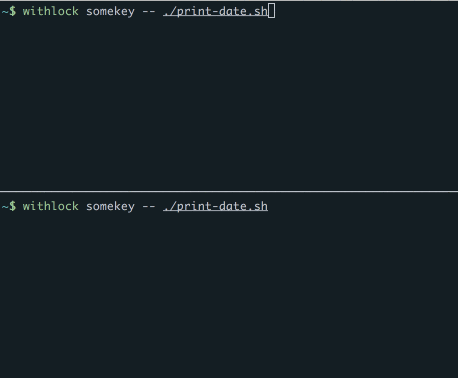advisory-lock v2.0.0
advisory-lock
Distributed* locking using PostgreSQL advisory locks.
Some use cases:
You have a clock process and want to make absolutely sure there will never be more than one process active at any given time.
This sort of situation can otherwise arise if the clock process is scaled up by accident or during a deployment which keeps the old version running until the new version responds to a health check.
Running a database migration at server startup. If your app is scaled, multiple processes will simultaneously try to run the database migration which can lead to problems.
Leader election. Let's say you have a web app and want to post a message to Slack every 30 mins containing some statistic (e.g. new registrations in the last 30 mins). You might have 10 processes running but don't want to get 10 identical messages in Slack. You can use this library to elect a "master" process which is responsible for sending the message.
* Your PostgreSQL database being a central point of failure. For a high available distributed lock, have a look at ZooKeeper.
Install
npm install --save advisory-lockExample
import advisoryLock from "advisory-lock";
const mutex = advisoryLock("postgres://user:pass@localhost:3475/dbname")(
"some-lock-name"
);
// waits and blocks indefinitely for the lock before executing the function
await mutex.withLock(async () => {
// do something exclusive
// releases lock when promise resolves or rejects
});
// doesn't "block", just tells us if the lock is available
const unlock = await mutex.tryLock();
if (unlock) {
// we are now responsible for manually releasing the lock
// do something...
await unlock();
} else {
throw new Error("could not acquire lock");
}See ./test for more usage examples.
CLI Usage
A withlock command line utility is provided to make to facilitate the
common use case of ensuring only one instance of a process is running at any
time.

withlock <lockName> [--db <connectionString>] -- <command>Where <lockName> is the name of the lock, <command> (everything after
--) is the command to run exclusively, once the lock is acquired.
--db <connectionString> is optional and if not specified, the
PG_CONNECTION_STRING environment variable will be used.
Example:
export PG_CONNECTION_STRING="postgres://postgres@127.0.0.1/mydb"
withlock dbmigration -- npm run knex migrate:latestUsage
advisoryLock(connectionString)
connectionStringmust be a Postgres connection string
Returns a createMutex function.
createMutex(lockName)
lockNamemust be a unique identifier for the lock
Returns a mutex object containing the functions listed below. All
object methods are really just functions attached to the object and
are not bound to this so they can be safely destructured,
e.g. const { withLock } = createMutext(lockName).
For a better understanding of what each functions does, see PosgtreSQL's manual.
mutex.withLock(fn)
fnFunction to be executed once the lock is acquired.
Like lock() but automatically release the lock after fn() is executed.
Returns the value returned by fn().
mutex.tryLock(): UnlockFunction
Returns an unlock() function if the lock was acquired and undefined otherwise.
mutex.lock(): UnlockFunction
Blocks and waits for lock acquisition and returns an unlock() function.